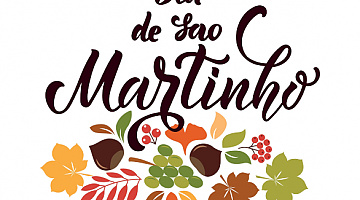The Legend of St. Martin

Published on
This time of year, Portuguese families love to gather around bonfires roasting chestnuts known as ‘castanhas’ and the adults enjoy a glass of ‘Jeropiga’, a fortified wine. This is to celebrate St Martin’s Day – Dia de Sao Martinho on the 11th of November, also called Magusto - believed to come from the Latin ‘magnus ustus’ or great fire.
But who was St. Martin?
The 11th of November is a religious holiday honouring Martin of Tours, a 4th-century Roman soldier who is known for a certain miracle.
St. Martin was a Gallic Knight born in 315 AD, who became a Christian preacher. One day, he was returning home on horseback after a battle in the middle of a severe storm.
On his way, he found a nearly naked beggar who asked for help. Martin had no money or food with him, but he was wearing a long cape which he cut in half with his sword. He gave half to the beggar to protect him from the cold.
According to the legend, right at this moment, the storm passed, the sun started to shine, and Jesus said to the angels, “Here is Martin, the Roman soldier who is not baptized; he has clothed me.” Unbeknown to Martin, the beggar was Jesus. It was considered a miracle, and the knight became a saint: Saint Martin - Sao Martinho.
Over the centuries, St. Martin's Day has evolved into a celebration of the end of the harvest and the beginning of winter. In Portugal, Dia de São Martinho has become a day to celebrate the maturation of the year’s wine production.
Throughout the winter season, chestnuts can be bought from street vendors. They are roasted on an open fire and usually sold by the dozen, served in a paper cone.
Portugal is steeped in charming traditions – find out more about investing in Portugal. Contact our knowledgeable and professional team at Berkshire Hathaway HomeServices Portugal Property – part of one of the world’s most trusted and respected corporations. Telephone +351 308 800 878 or 0800 014 8201 free from the UK. Alternatively, email us at hello@PortugalProperty.com
Published in: Guide to Portugal / Miscellaneous / Portuguese Life